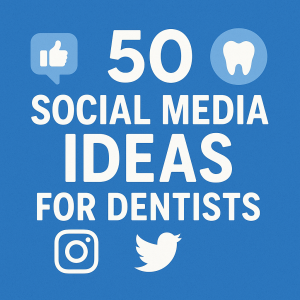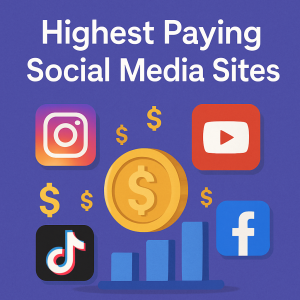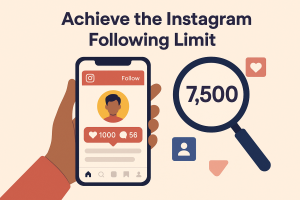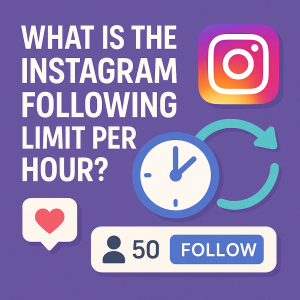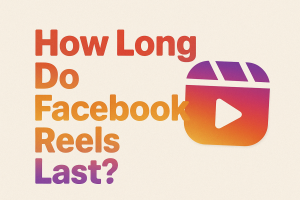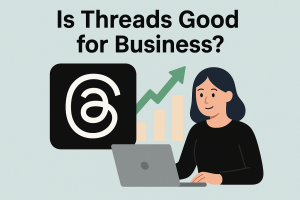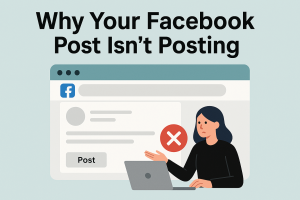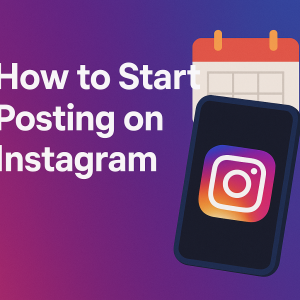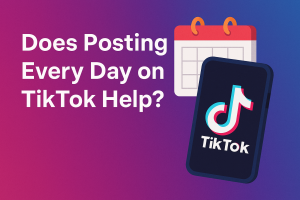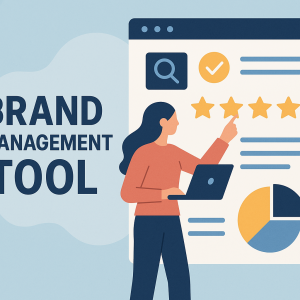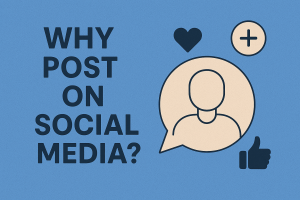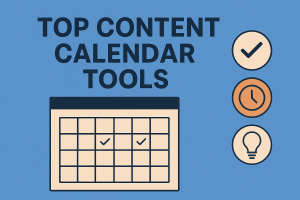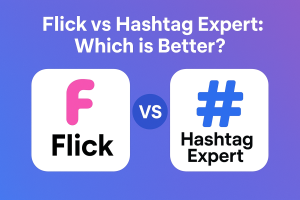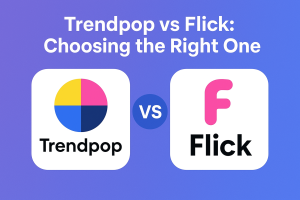In today’s fast-paced social media landscape, understanding TikTok performance is non-negotiable for marketers. Analytics tools empower brands to track trends, measure engagement, and refine strategies. But with multiple platforms available, selecting the right one can feel overwhelming.
This article breaks down two leading solutions designed to simplify data-driven decisions. One shines in dissecting audience behavior and content preferences, while the other offers robust cross-platform insights and competitor benchmarking. We’ll explore their strengths, pricing models, and how they align with specific marketing goals.
Whether you’re managing a brand account or advising clients, choosing the best fit depends on your priorities. Do you need deep demographic insights or multi-channel reporting? Our comparison cuts through the noise, focusing on practical features that drive real results.
By the end, you’ll have a clear roadmap to optimize your TikTok presence. Let’s dive into what makes these tools unique – and how they can elevate your social media game.
Key Takeaways
- Audience-focused analytics are critical for tailoring content to viewer preferences
- Cross-platform reporting helps track performance across multiple social channels
- Competitor analysis features reveal strategic opportunities in your niche
- Pricing structures vary significantly based on team size and feature needs
- Real-time metrics enable quick adjustments to marketing campaigns
Introduction to TikTok Analytics and Social Media Tools
TikTok has rewritten the rules of digital engagement, becoming the fastest-growing platform in history. With over 1 billion monthly active users, it’s reshaped how brands connect with audiences. Short-form video content now drives cultural moments, product launches, and even political movements.
Overview of TikTok’s Impact on Social Media
The platform’s algorithm favors creativity over follower counts, giving even small accounts viral potential. Unlike traditional social media channels, TikTok’s “For You Page” creates unpredictable content discovery. This unique ecosystem demands specialized TikTok analytics tools to decode what resonates.
Brands that master these trends see 3x higher engagement than static posts. A recent study found 67% of users discover new products through TikTok videos. “Understanding your data here isn’t optional – it’s survival,” notes a digital strategist at a top ad agency.
Why Analytics Tools Are Essential
Effective TikTok marketing requires more than guessing what works. Robust analytics tools reveal:
- Peak posting times for your specific audience
- Content formats driving shares and saves
- Emerging audio trends before they peak
These insights help creators pivot quickly in a platform where trends fade fast. Agencies using TikTok analytics report 40% faster campaign optimizations compared to manual tracking.
As the platform evolves, so do the solutions for measuring success. The right tool transforms raw numbers into actionable strategies – whether you’re tracking hashtag performance or benchmarking against competitors.
Exolyt vs Socialinsider: A Comparative Overview
Choosing the right analytics platform can make or break your TikTok strategy. One solution specializes in audience behavior patterns, while the other excels at tracking competitors across platforms. Both tools offer social listening features, but their approaches differ significantly.
The first platform stands out for real-time demographic insights. It identifies trending sounds and visual styles your specific followers engage with most. Brands use these TikTok analytics to craft content that matches viewer preferences, like adjusting video lengths based on watch-time data.
In contrast, the second tool provides historical performance comparisons. Users can benchmark their content against rivals from three months prior. This helps spot seasonal trends or gauge campaign improvements. “Historical context transforms raw numbers into strategic roadmaps,” explains a digital marketing director.
Both platforms analyze comments and shares for social listening, but their outputs vary. One generates heatmaps of audience sentiment peaks, while the other tracks competitor response rates. These insights help refine posting schedules and engagement tactics.
When evaluating analytics tools, consider your team’s needs. Immediate audience feedback suits creators targeting viral moments. Cross-platform reports and trend archives benefit agencies managing multiple brands. The best TikTok analytics solution depends on whether you prioritize depth or breadth in data storytelling.
Key Features Comparison of Leading TikTok Tools
Data-driven strategies separate thriving TikTok accounts from stagnant ones. Modern platforms offer distinct approaches to unlocking performance secrets. Let’s explore what makes these solutions stand out – and where they overlap.
Standout Features for Specialized Needs
One platform dominates with AI-powered trend predictions, analyzing audio patterns and visual styles. Its sentiment heatmaps show exactly when viewers lose interest in videos. Brands use these insights to trim content lengths for maximum retention.
The competitor shines in cross-platform comparison engines. Users can pit TikTok results against Instagram Reels or YouTube Shorts within one dashboard. This side-by-side view helped us redistribute resources effectively,” shares a social media manager at a beauty brand.
| Feature | Tool A | Tool B |
|---|---|---|
| Social Listening | Emotion analysis in comments | Competitor response rate tracking |
| Demographics | Real-time age/location updates | Historical audience migration patterns |
| Reports | Auto-generated video summaries | Custom brand guideline templates |
Shared Essentials for Smart Decisions
Both analytics tools deliver core functions every marketer needs:
- Hashtag performance trackers with reach estimates
- Follower growth timelines with milestone alerts
- Exportable metrics for client presentations
Real-time dashboards update engagement data every 15 minutes. Custom filters let teams focus on specific campaign metrics or content types. These shared features ensure quick pivots when trends shift unexpectedly.
While their approaches differ, both platforms transform raw numbers into visual stories. The right choice depends on whether you need microscopic audience analysis or macroscopic trend forecasting.
In-Depth Look at Exolyt
Mastering TikTok’s algorithm requires more than viral guesses – it demands precise audience understanding. Specialized platforms decode viewer behavior through layered data streams, turning scrolling patterns into strategic advantages.
Demographic Precision in Action
Advanced tools dissect viewer profiles with surgical precision. Age brackets, gender splits, and location clusters update in real-time, revealing unexpected audience segments. A skincare brand recently discovered 38% of their viewers were men aged 25-34 – data that reshaped their entire content calendar.
Three core metrics drive these insights:
- Hourly audience activity heatmaps
- Device-specific engagement rates
- Language preference correlations
Decoding the Emotional Pulse
Social listening features track beyond basic likes and shares. AI analyzes comment emojis, video rewatches, and even silent exits to gauge true sentiment. One fashion retailer used these signals to pivot from product showcases to styling tutorials, boosting saves by 217%.
Platforms merge historical data with live metrics to spot trends. When a beverage company noticed rising “family-friendly” comments, they cross-referenced past campaigns. This revealed a 9 AM posting sweet spot for parent viewers – a detail raw engagement numbers missed.
“These tools transformed how we approach influencer partnerships. We now match creators not just by follower count, but by their audience’s emotional response patterns.”
Granular analytics TikTok professionals trust enable smarter experiments. A/B testing content lengths against retention graphs helps refine storytelling approaches. Teams report 54% faster optimizations using these visual data stories compared to spreadsheet analysis.
In-Depth Look at Socialinsider
Modern brands need tools that connect dots across fragmented digital spaces. Advanced analytics platforms now offer unified views of performance data, blending real-time metrics with historical patterns. This dual perspective helps teams make smarter decisions faster.
Organizing Chaos Through Smart Tagging
The right platform lets teams categorize content with surgical precision. Users tag posts by campaign themes, product lines, or seasonal initiatives. A fitness brand might label videos as “HIIT workouts” or “meal prep guides” to track what resonates.
Benefits of strategic tagging include:
- Quick performance comparisons between campaigns
- Identification of top-performing content formats
- Simplified reporting for specific initiatives
Seeing the Full Picture Across Networks
Cross-platform analysis reveals how social media efforts interact. Teams compare TikTok engagement against Instagram Reels or YouTube Shorts in one dashboard. A travel agency discovered their TikTok tutorials drove 23% more website clicks than similar Instagram content.
| Platform | Avg. Engagement Rate | Audience Overlap |
|---|---|---|
| TikTok | 8.7% | 42% with Instagram |
| 6.1% | 58% with YouTube | |
| YouTube | 4.9% | 31% with TikTok |
Learning From Yesterday to Win Tomorrow
Historical data tracking transforms guesswork into strategy. The tool archives performance metrics up to three years back. A beauty brand analyzed quarterly trends to time their viral hashtag challenge perfectly.
Key reporting advantages:
- Automated PDF exports with brand colors
- Side-by-side competitor comparisons
- Custom date range filters
“These reports cut our presentation prep time in half. Clients love seeing their growth visualized against industry benchmarks.”
Clear dashboards highlight what matters most. Drag-and-drop widgets let teams build custom views for different campaigns. Real-time alerts notify users when key social media metrics hit targets.
Pricing and Subscription Plans
Budgeting for social media tools requires balancing cost with actionable insights. Platforms now offer tiered models catering to solopreneurs and global teams alike. Let’s explore how pricing structures align with different stages of brand growth.
Cost-Effective Options for Small Teams
Entry-level plans start at $82/month, providing core analytics for startups. These include basic competitor tracking and three social profiles. Free trials let teams test-drive features before committing funds.
Value shines in automated reports and trend alerts. A boutique agency reported doubling engagement using just these tools: “We identified underperforming content within days, not weeks.”
Advanced Plans for Enterprises
Enterprise packages unlock custom dashboards and API access. Pricing scales with team size, offering:
- Unlimited historical data comparisons
- Dedicated account managers
- White-label reports for client presentations
One beauty brand saw 37% faster decision-making after upgrading. Their marketing lead notes: “Cross-department access to real-time metrics eliminated endless email chains.”
“Our $450/month investment delivers $12k+ in monthly saved labor costs. Premium features pay for themselves when scaling campaigns.”
Free tiers suit early-stage testing, while advanced plans drive measurable growth. The right pricing model turns analytics from an expense into a profit multiplier.
Performance Metrics and Reporting Capabilities
Understanding what moves your audience starts with tracking the right numbers. Modern analytics platforms transform raw data into clear growth strategies. Let’s explore how metrics shape smarter TikTok campaigns and why reporting tools matter for teams at every level.
Engagement Rate and Follower Growth Analysis
Engagement rates reveal how viewers interact with content beyond simple likes. Platforms track shares, saves, and average watch time to show what truly resonates. A viral dance challenge might get 10k views but low saves – signaling fleeting interest versus lasting value.
Follower growth timelines highlight when audiences expand fastest. One skincare brand spotted 73% of new followers came after posting educational video content. This insight shifted their entire content calendar toward tutorials.
- Real-time tracking spots trends as they happen
- Historical comparisons identify seasonal patterns
- Demographic filters show which groups engage most
Customized and Presentation-Ready Reports
Teams no longer waste hours building reports from scratch. Drag-and-drop templates let marketers create polished decks in minutes. Export options range from PDFs to live dashboards clients can explore themselves.
Key reports that drive decisions include:
- Trend analysis showing rising hashtags and sounds
- Competitor benchmarking across multiple accounts
- Content performance sorted by format or theme
“Our weekly reports now take 15 minutes instead of three hours. Clients appreciate seeing their top-performing video types highlighted upfront.”
Real-time metrics help teams pivot quickly. When a post’s completion rate drops below 45%, instant alerts prompt edits to future content. These tracking features turn numbers into actionable improvements – the true power of smart reporting.
Audience Engagement and Insights
Engagement metrics act as a compass for navigating TikTok’s unpredictable terrain. Every like, share, and comment reveals viewer preferences that shape winning content strategies. Leading platforms transform these signals into clear pathways for growth.
Tracking Likes, Shares, and Comments
Likes measure instant appeal, while shares indicate content worth spreading. Comments often hold gold – 62% of viral videos spark conversations asking for details or tutorials. A skincare brand redesigned their entire feed after noticing “How-to?” dominated their comment sections.
These insights drive smarter experiments. When dance challenge videos showed high shares but low saves, one fitness creator switched to educational posts. The result? A 140% increase in profile visits from serious learners.
- Share rates predict content reach beyond existing followers
- Comment sentiment analysis spots emerging trends
- Like-to-view ratios highlight hooks that grab attention
Strategic adjustments happen fast with live engagement dashboards. Teams spot underperforming posts within hours, not days. One food blogger shifted posting times after noticing 68% of their comments came during lunch breaks.
“Tracking comment trends helped us identify five new product ideas last quarter. Audience insights became our R&D department.”
Competitor analysis completes the picture. Seeing rivals’ top-shared content formats inspires innovation while avoiding crowded trends. Combined with historical data, these tools turn engagement patterns into a repeatable strategy for organic growth.
TikTok Analytics Tools and Historical Data Usage
Unlocking TikTok’s full potential requires more than real-time metrics – it demands a time machine into your account’s past performance. Leading TikTok analytics tools now offer unlimited historical data tracking, transforming yesterday’s numbers into tomorrow’s strategy.
Analyzing 6-12 months of data reveals patterns invisible in weekly reports. Brands spot seasonal spikes, content fatigue cycles, and audience migration trends. A 2023 Social Media Today study found marketers using historical analysis achieved 29% higher engagement rates than those relying solely on recent metrics.
Three ways historical insights sharpen strategies:
- Identifying evergreen content themes through year-round performance
- Tracking follower growth triggers across campaigns
- Comparing holiday season results year-over-year
Advanced tools visualize this data through interactive timelines. Drag sliders to see how algorithm changes impacted reach or how new formats affected watch time. “Our Q4 strategy directly mirrors what worked during last year’s holiday surge,” shares a retail brand’s social lead.
“Historical benchmarks help separate fleeting trends from lasting shifts. Without this context, you’re optimizing based on incomplete stories.”
Cross-referencing current media performance with past results prevents costly missteps. When a viral dance challenge underperformed compared to previous years, one agency pivoted quickly to tutorial-style content. This TikTok analytics tool feature saved 47 hours of potential wasted effort.
For teams managing multiple accounts, historical media analysis becomes essential. Custom date ranges and exportable reports turn raw numbers into boardroom-ready narratives. The right tools don’t just track history – they help rewrite your brand’s future on TikTok.
User Experience and Interface Design
The effectiveness of TikTok analytics tools hinges on how effortlessly users can navigate their features. Clean layouts and logical workflows separate platforms that empower marketers from those that overwhelm them. Let’s explore how design choices impact daily use and strategic decisions.
Simplicity and Navigation
Top-rated analytics TikTok solutions use color-coded menus and drag-and-drop filters. These elements help teams find data quickly – like tracking hashtag performance in three clicks instead of ten. A 2023 UX study found marketers using intuitive interfaces saved 9 hours weekly on reporting tasks.
| Design Element | Time-Saving Impact |
|---|---|
| Customizable dashboards | 47% faster metric retrieval |
| One-click export buttons | 83% reduction in report prep |
| Visual search bars | 62% fewer navigation errors |
Visual Dashboard and Data Export Options
Interactive charts transform numbers into stories. Heatmaps show engagement peaks, while trend lines predict content lifespans. These visuals helped our team spot underperforming videos before they hurt our metrics,” shares a social media manager at a retail brand.
Key export features include:
- Pre-formatted templates for client meetings
- Automatic CSV conversions for spreadsheet analysis
- Branded PDFs with editable commentary sections
Cross-platform compatibility ensures data flows seamlessly into other marketing tools. Teams using integrated platforms report 31% faster campaign adjustments compared to manual transfers. This synergy turns raw metrics into actionable strategies without technical headaches.
Strengths and Limitations of Exolyt
Understanding audience behavior separates impactful campaigns from generic content. Specialized tools decode viewer preferences through layered metrics, turning scrolling patterns into strategic advantages.
Precision in Audience Insights
This platform excels in audience analysis, offering granular demographic breakdowns updated hourly. Brands track city-level engagement spikes and language preferences to refine targeting. A beauty brand discovered 28% of their viewers were Spanish-speaking men aged 18-24 – data that reshaped their influencer partnerships.
Three advanced techniques drive results:
- Emotion heatmaps showing exact moments viewers rewatch content
- Influencer performance scores based on follower authenticity
- Growth prediction models using historical engagement patterns
Real-time tracking helps teams optimize campaigns mid-flight. When a cooking channel noticed 62% audience drop-off at the 8-second mark, they adjusted recipe intros – boosting retention by 41%.
“The sentiment analysis feature helped us identify which product features sparked excitement versus confusion. We now craft tutorials addressing specific pain points.”
While the tool delivers exceptional performance insights, some users note limitations. Cross-platform comparisons require manual data imports, and team collaboration features remain basic. However, its strengths in micro-targeting make it indispensable for brands prioritizing deep audience understanding over broad analytics.
Strengths and Limitations of Socialinsider
Effective social media strategies require tools that turn data into actionable insights. Socialinsider excels in connecting competitive intelligence with content optimization, though its depth comes with specific trade-offs.
Benefits for Competitive and Content Analysis
The platform’s competitive benchmarking tracks rivals’ engagement rates, hashtag use, and growth patterns. Brands compare performance across campaigns or seasons, spotting gaps in their strategies. A skincare company used these insights to outpace competitors by 19% in follower growth last quarter.
| Feature | Strength | Consideration |
|---|---|---|
| Content Tagging | Organizes posts by theme or campaign | Requires consistent manual input |
| Influencer Tracking | Monitors cross-platform creator impact | Limited real-time updates |
| Multi-Channel Reports | Compares TikTok/Instagram/YouTube data | Dashboard customization takes practice |
Tagging content by campaign type helps teams identify top-performing formats. However, users note the interface demands careful setup to avoid data overload. One agency streamlined workflows by color-coding tags for quick visual sorting.
Influencer analytics reveal which creators drive meaningful engagement versus vanity metrics. The tool tracks follower authenticity and cross-post performance – crucial for brands allocating partnership budgets.
While powerful, the platform’s depth can overwhelm new users. Teams recommend starting with core features like automated competitor reports before exploring advanced filters. Regular audits prevent analysis paralysis from excessive data points.
Best Use Cases for Brands and Marketers
Smart brands turn TikTok data into dollars through precise influencer partnerships and content tweaks. The right analytics tools transform scrolling patterns into profit-driving strategies.
Influencer Marketing and Campaign Management
Platform A excels at matching brands with creators whose audiences align with their target demographics. A skincare company boosted sales by 33% after identifying influencers with high engagement rates among women aged 25-34.
| Tool Feature | Campaign Impact |
|---|---|
| Audience Authenticity Scores | Reduced fake follower partnerships by 41% |
| Cross-Platform Performance Tracking | Increased campaign ROI by 28% |
Platform B’s competitor benchmarking helps brands spot partnership opportunities. One beverage company discovered micro-influencers in untapped markets through location-based analytics, driving 19% higher click-through rates.
Content Strategy Optimization
Real-time performance metrics guide content evolution. A fashion retailer increased saves by 217% by adjusting video lengths based on watch-time heatmaps.
- Hashtag effectiveness reports improve discoverability
- Sound trend predictions boost early participation
- Engagement pattern analysis refines posting schedules
“Our team cut content testing time by 60% using platform insights. We now replicate top-performing formats across campaigns systematically.”
Brands using both tools report 47% faster marketing strategy adjustments. The key lies in combining deep audience insights with competitive intelligence for maximum impact.
Conclusion
Navigating TikTok’s dynamic environment demands tools that turn data into decisive actions. While both platforms deliver powerful analysis, their core strengths cater to distinct needs. One excels in granular audience insights, ideal for brands refining hyper-targeted content. The other offers cross-platform reports, perfect for agencies managing multi-channel campaigns.
Pricing flexibility remains a key differentiator. Small teams benefit from entry-level plans under $100/month, while enterprises gain value from custom dashboards and API access. Budget-conscious users should prioritize features aligning with their strategy – whether real-time metrics or historical benchmarks.
Before committing, test-drive features through free trials. Hands-on experience reveals which interface and reporting style suit your workflow. Brands focused on viral potential might lean toward one tool, while those tracking competitors across platforms may prefer the other.
Ultimately, the right choice amplifies your ability to spot trends, optimize content, and allocate resources wisely. With TikTok’s algorithm favoring agility, robust insights transform raw numbers into lasting growth. Start exploring today – your next viral moment could hinge on the reports you generate tomorrow.




